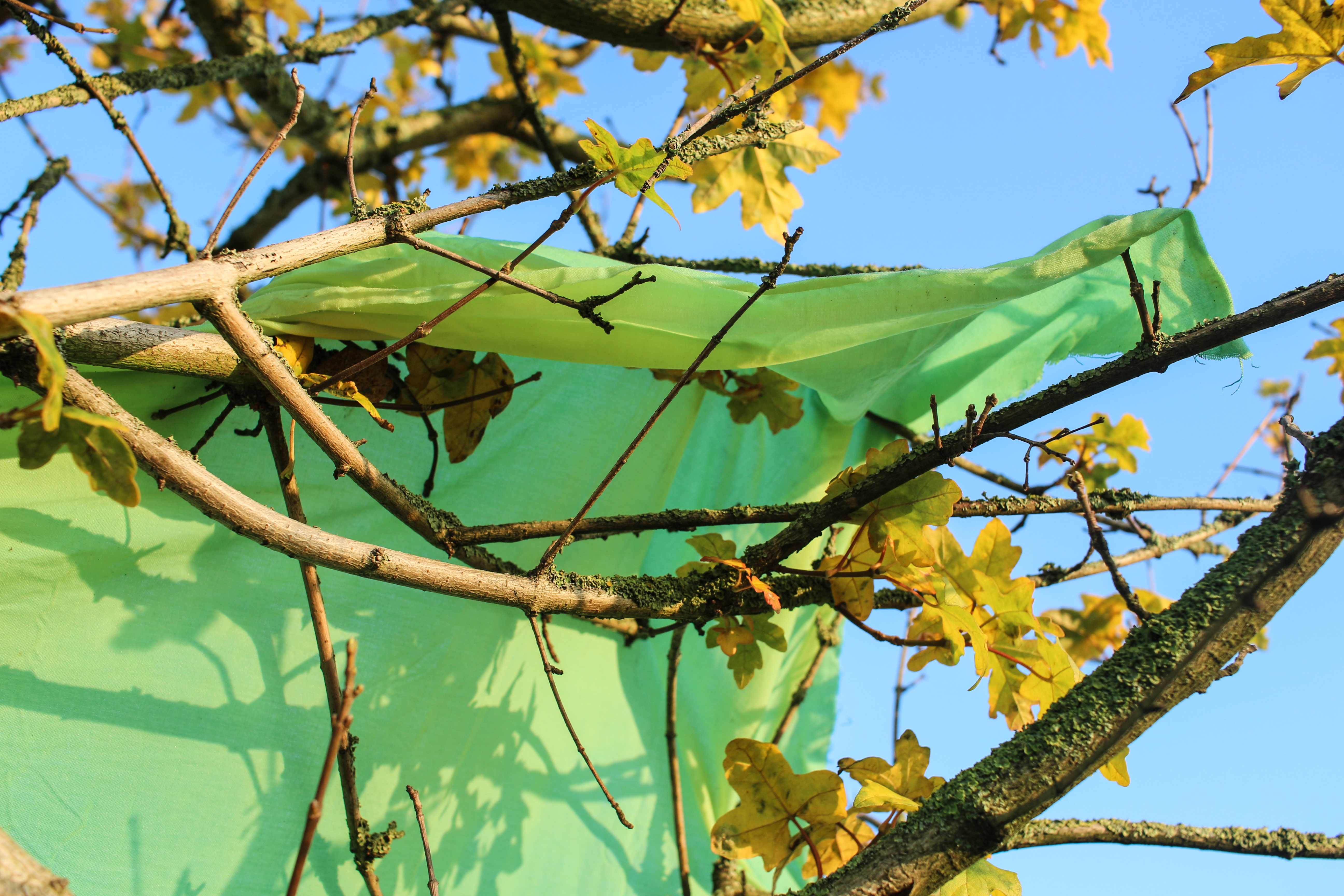

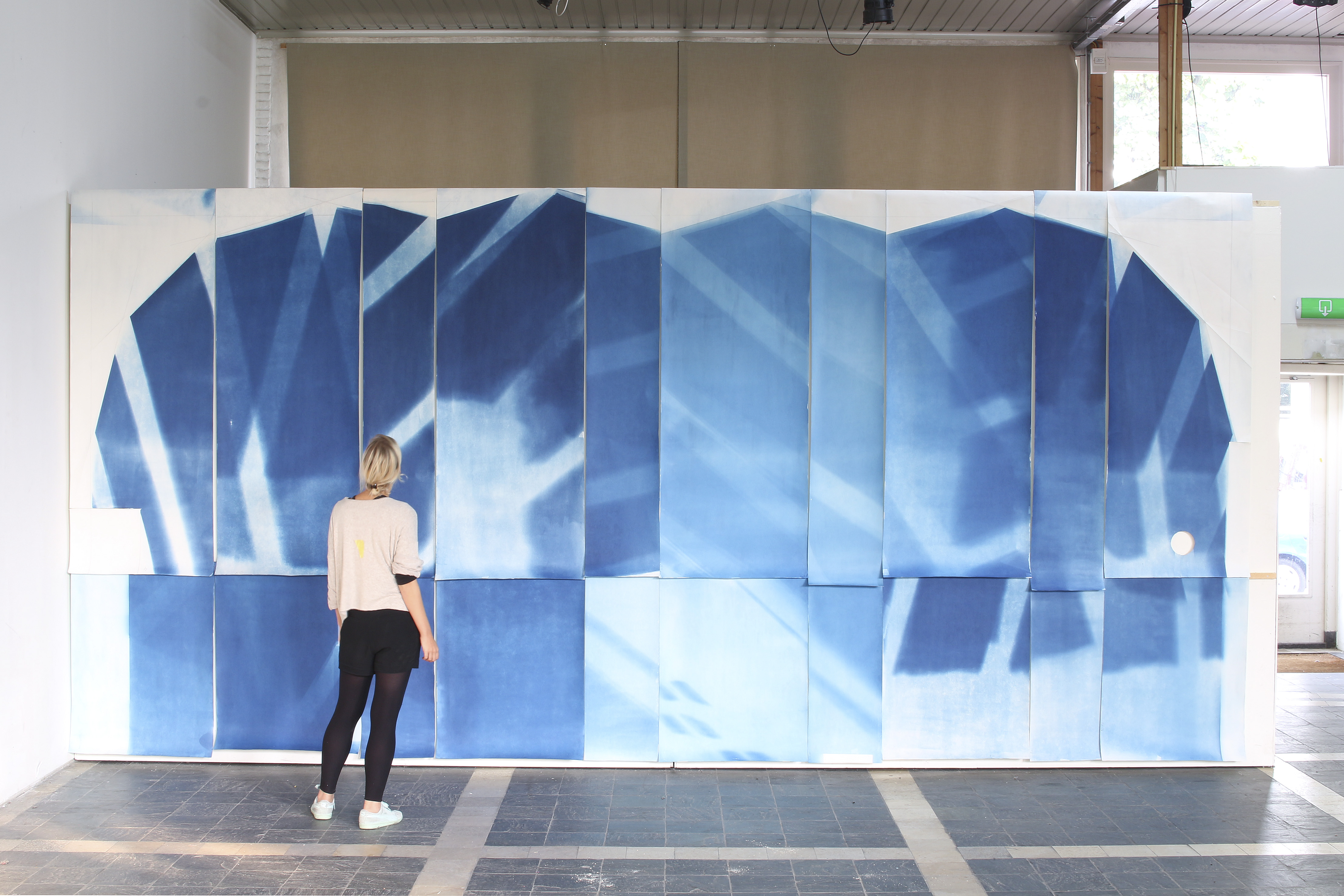









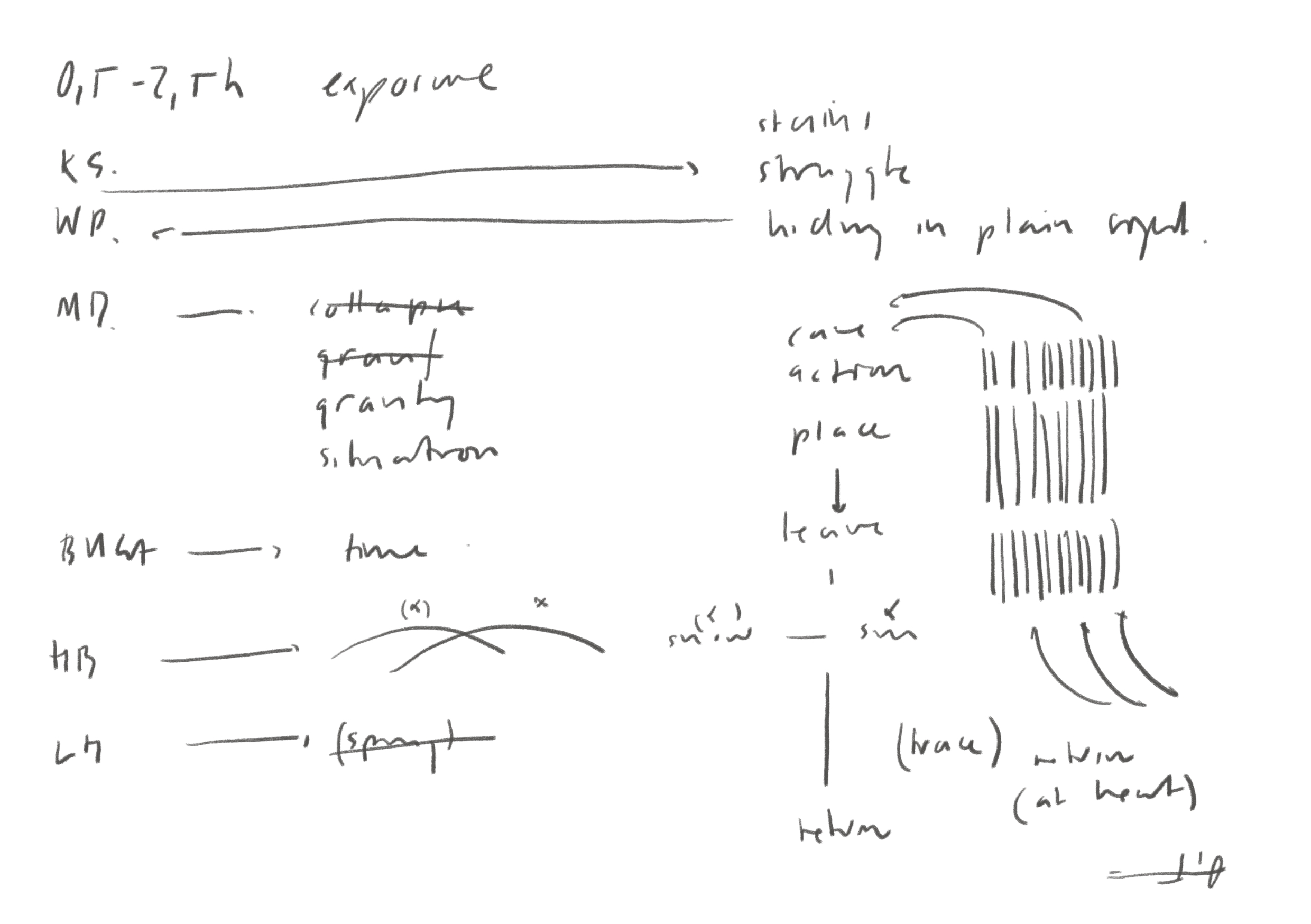

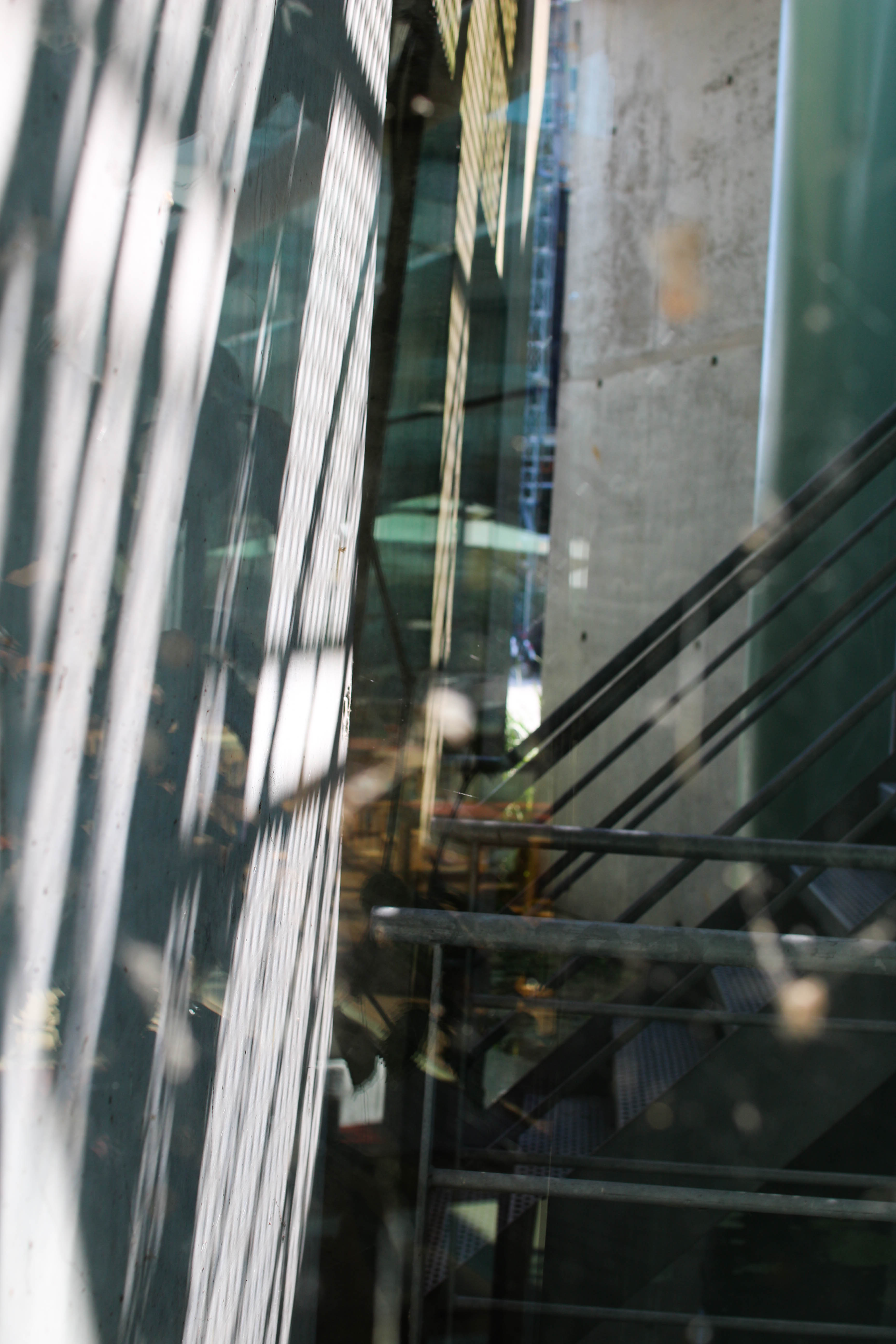



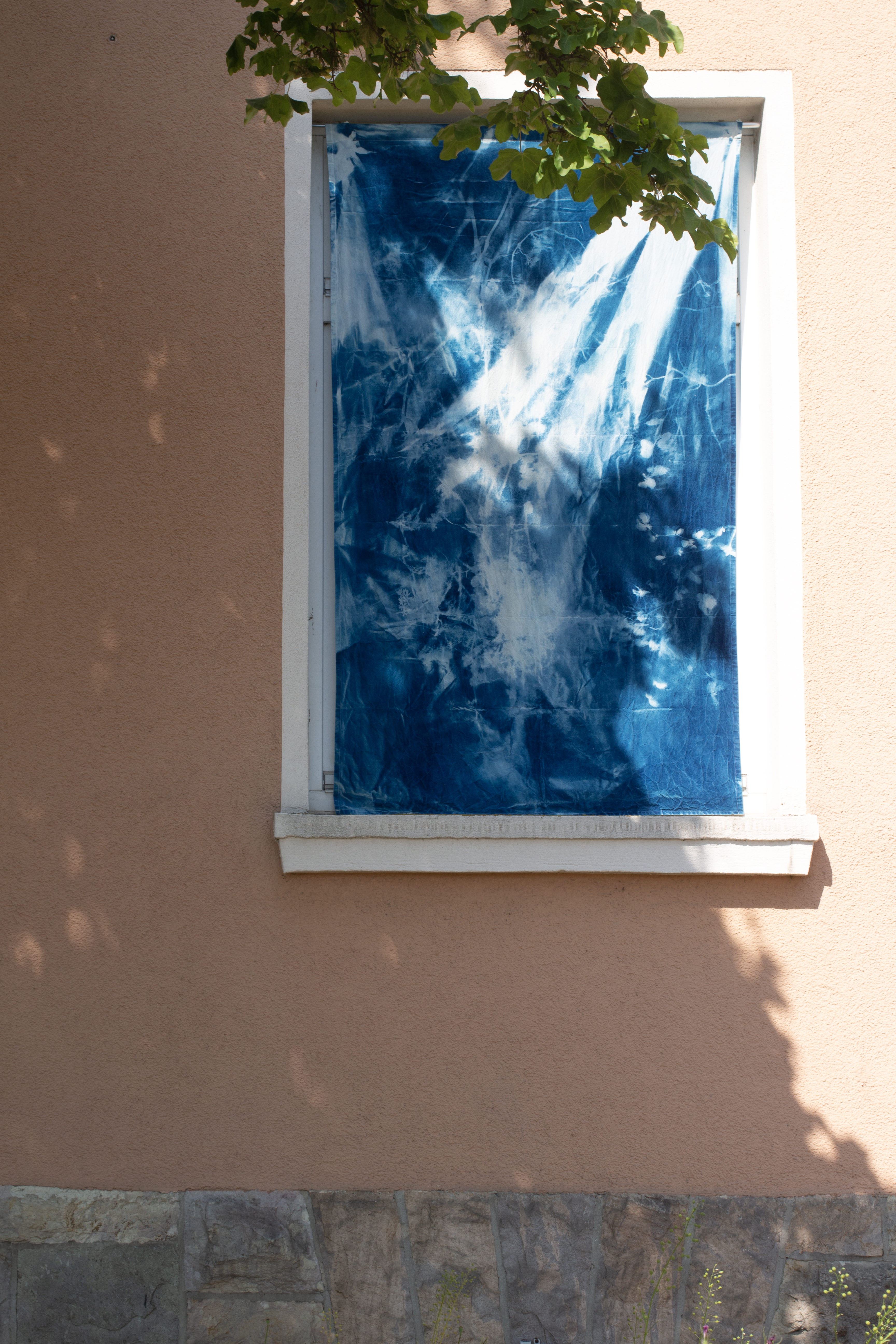

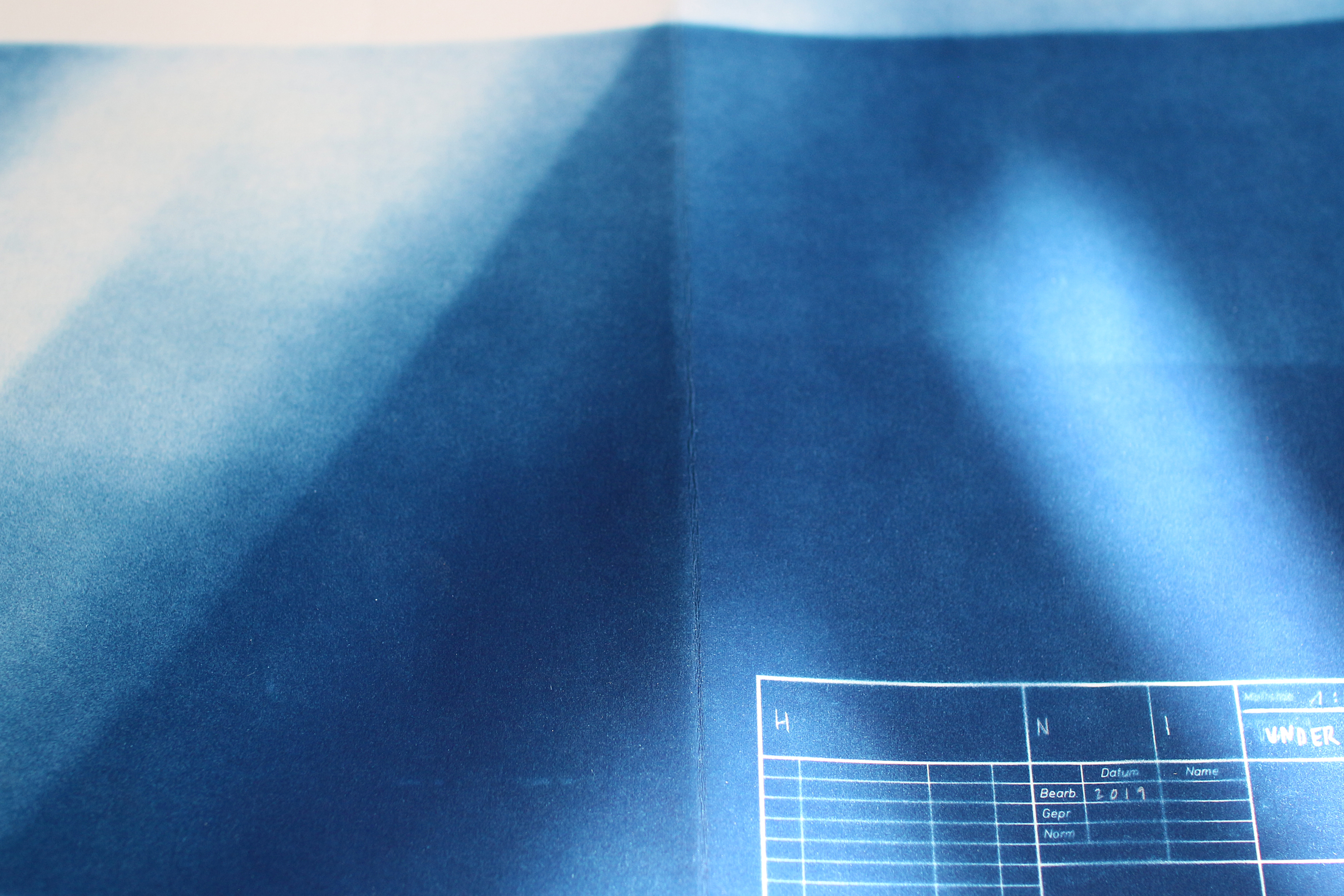






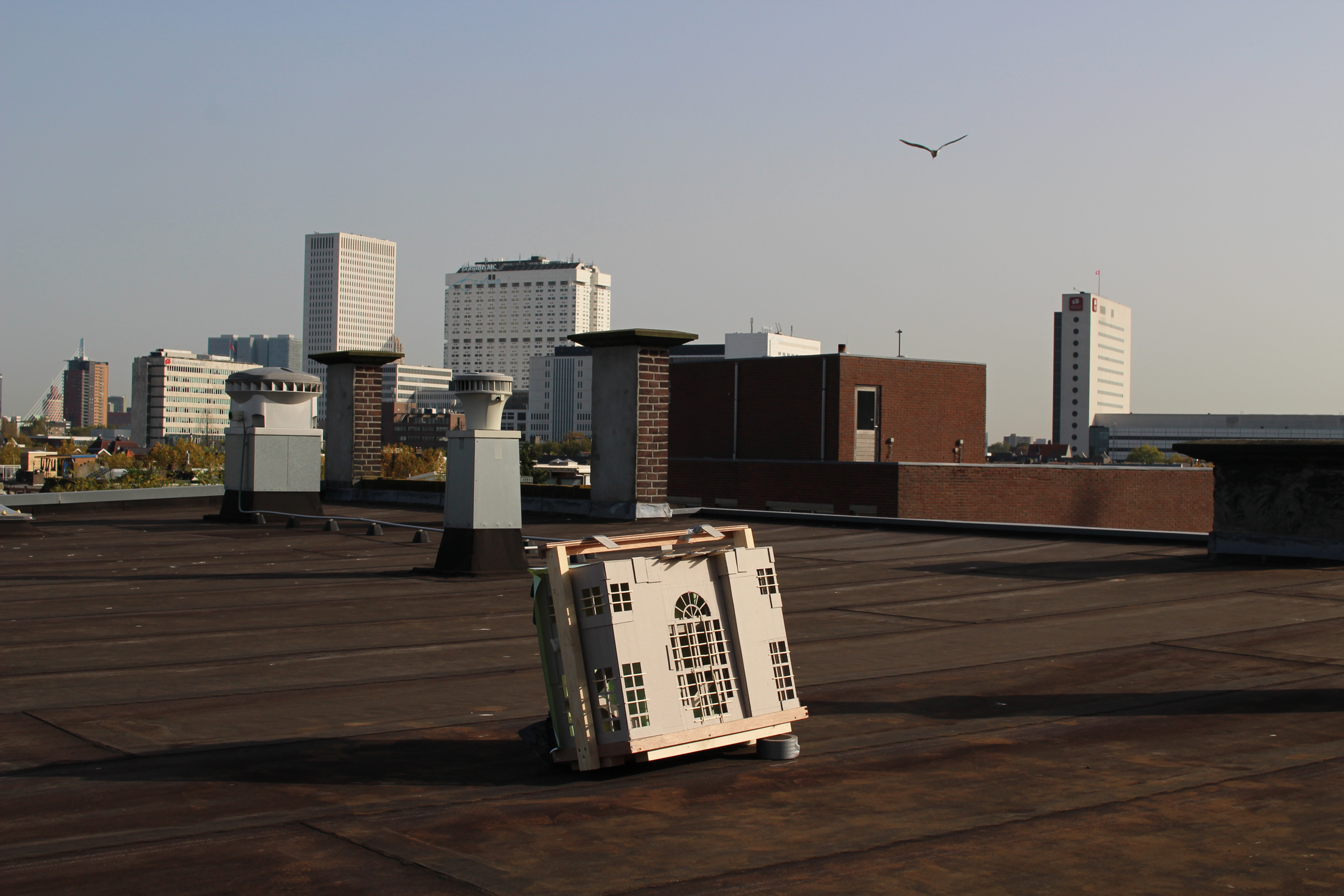










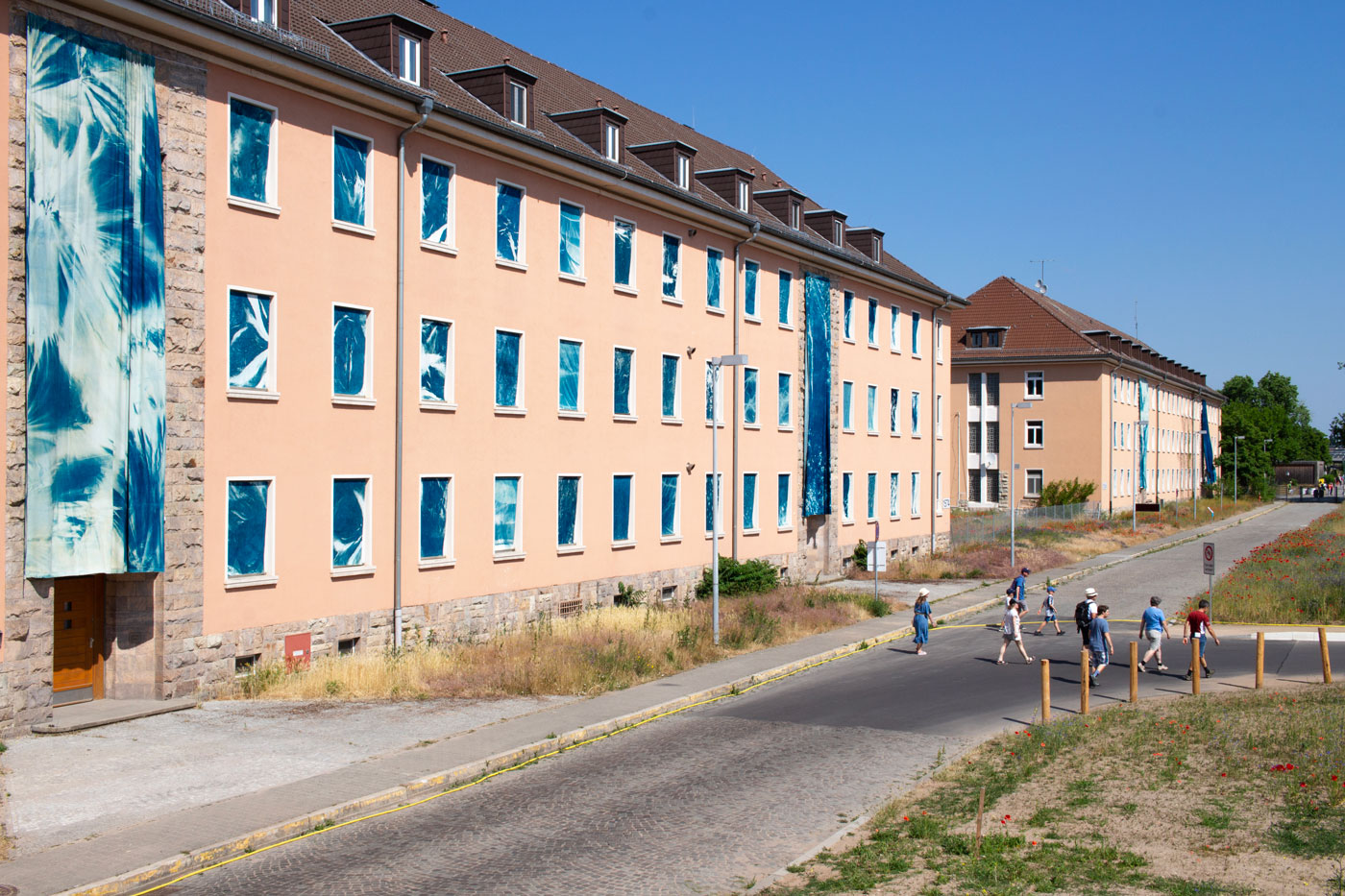


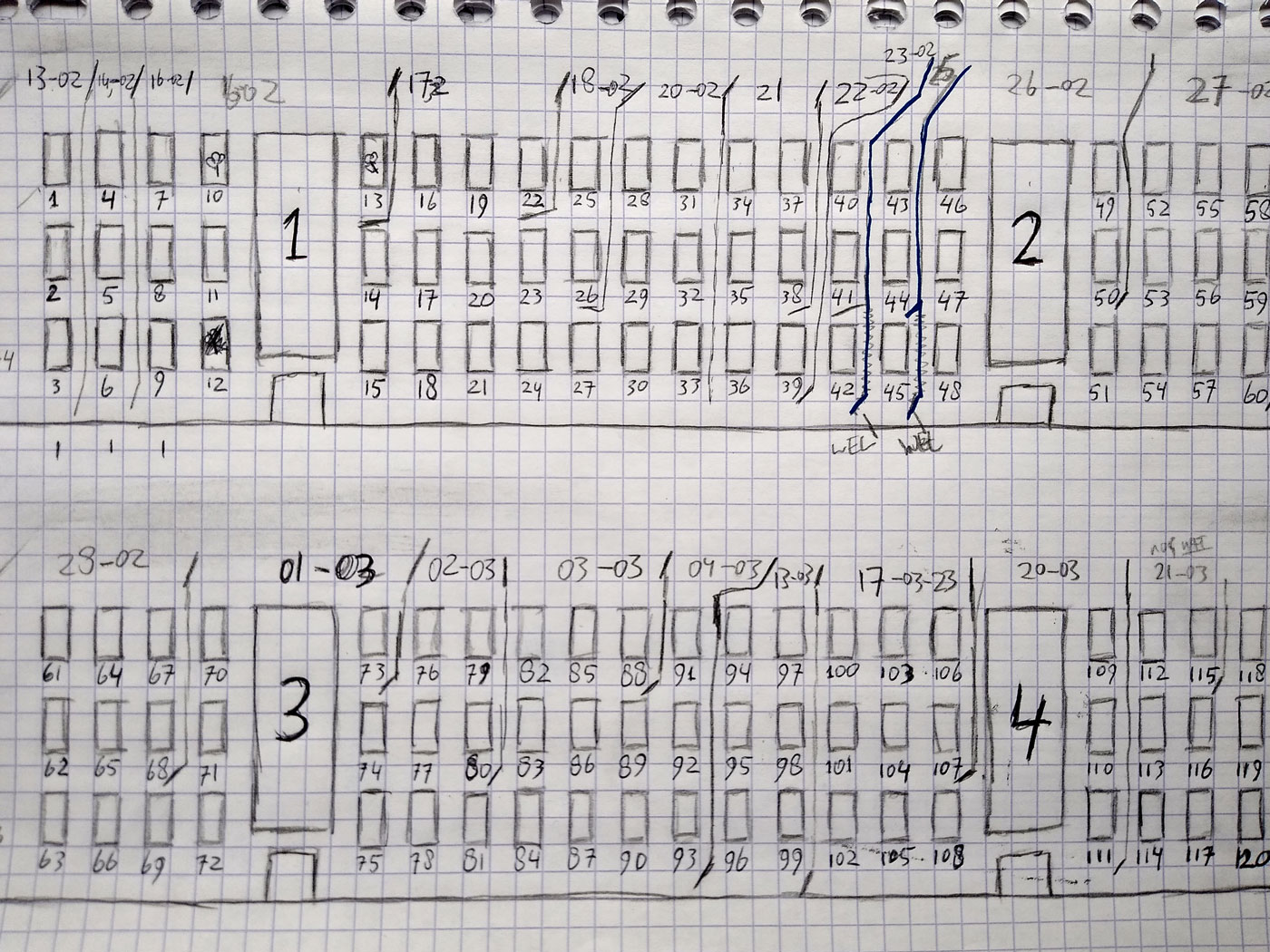


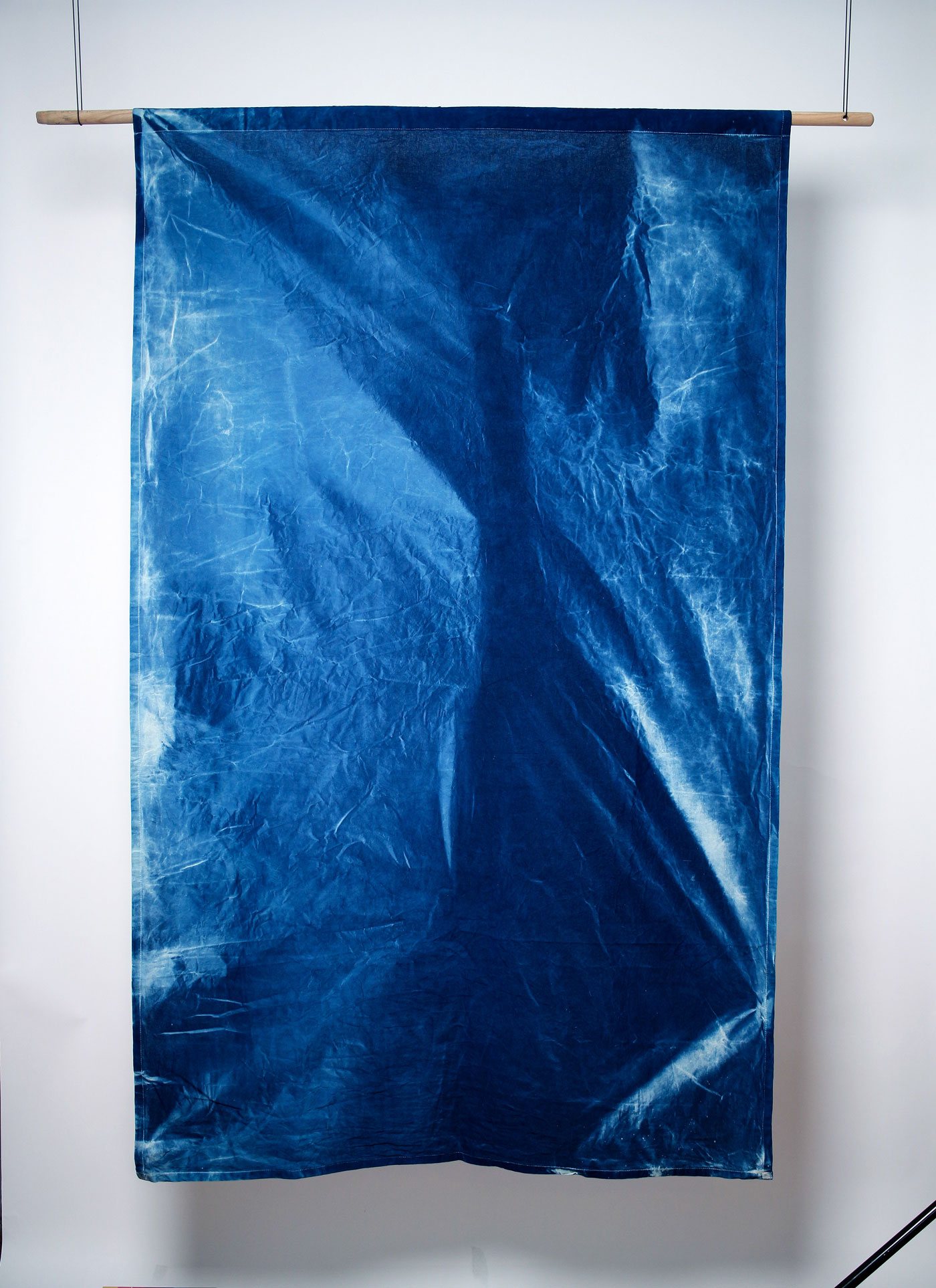
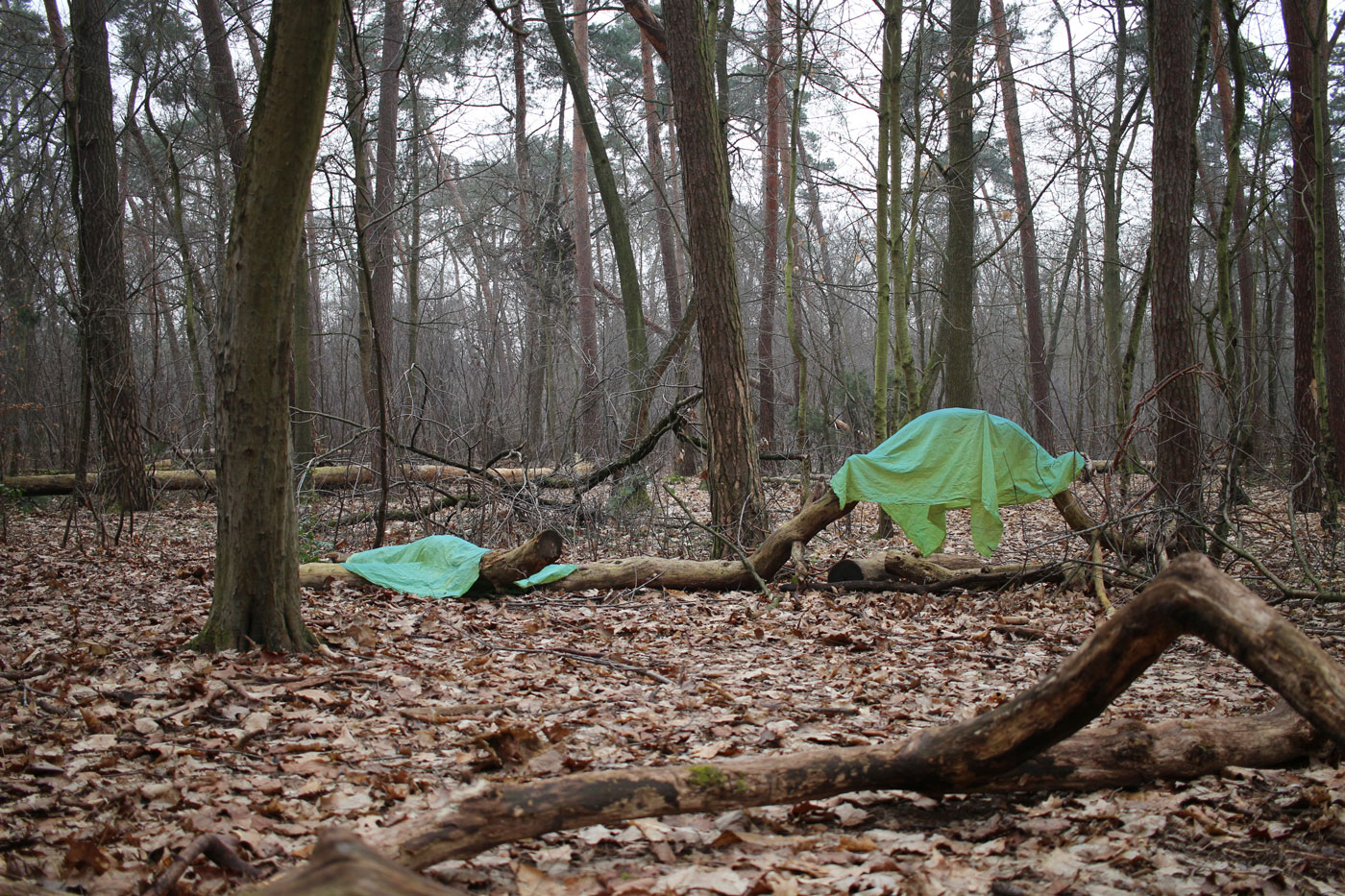




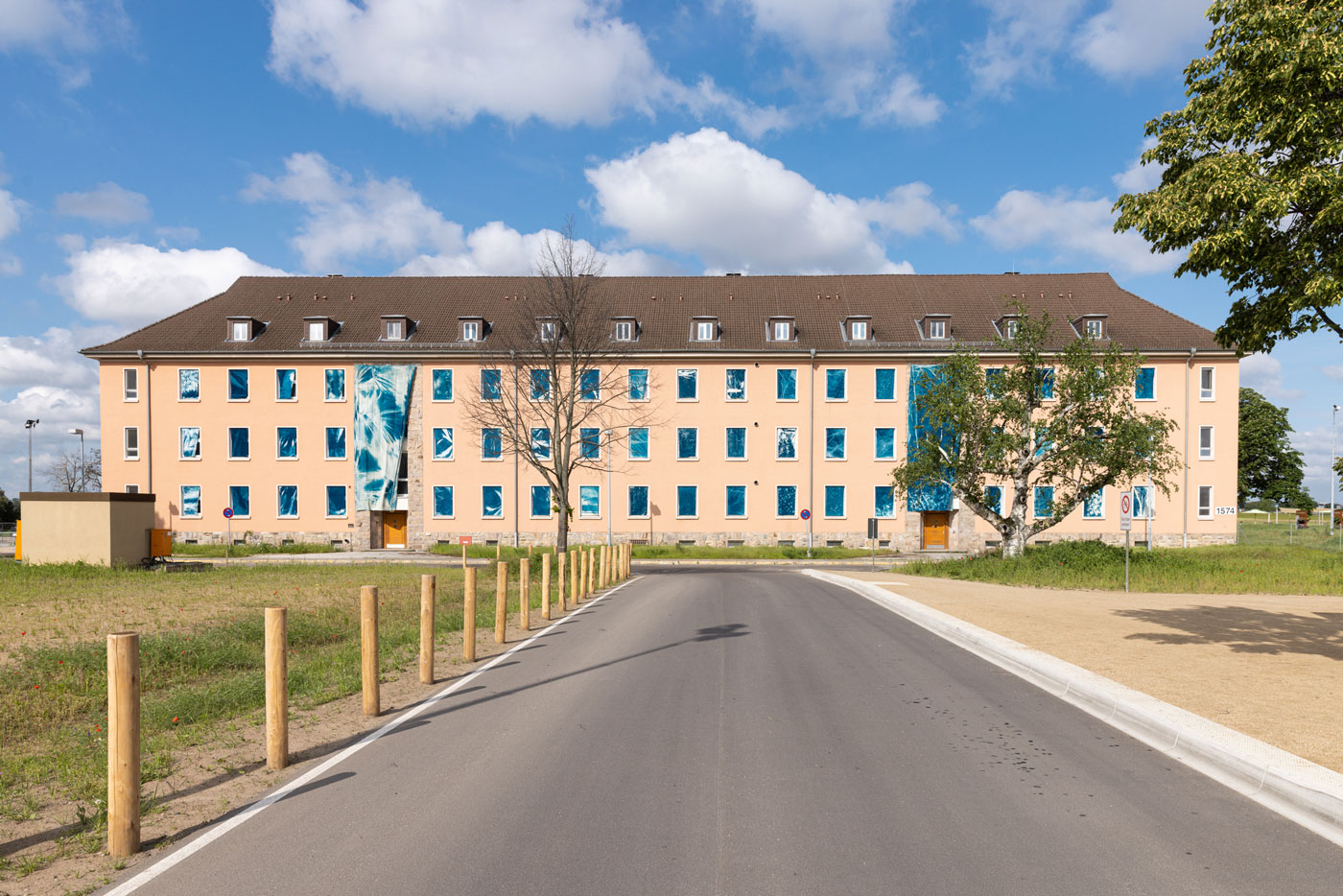
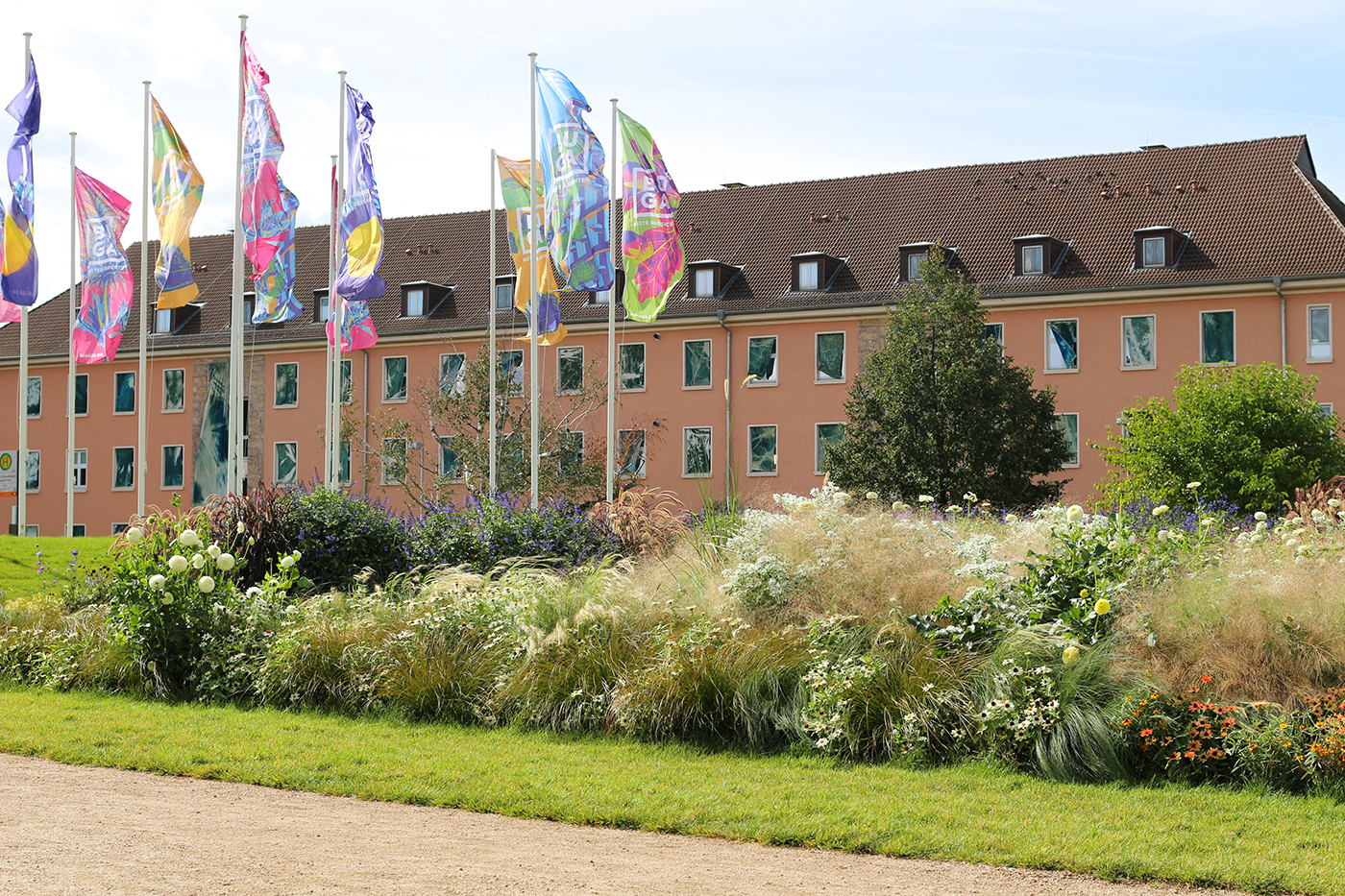





under the same sun:
Reallabor für Erneuerbare Fotografie (2023)
The work is a large-scale art installation
of more than 120 cyanotypes in the entrance area of BUGA 23. The installation
was developed on site in forest areas in and around Mannheim over a period of
two months. The departure point for the artistic work is the experimental
history of the cyanotype - the study of light - and its application as a
blueprint in architecture. Experiments with techniques and exposure times make
temporal and spatial relationships of light and space visible and attempt to capture
the experience of a place as a monochrome blue negative.
The work was created as part of the 'Reallabors für erneuerbare Fotografie', a collaboration of the Biennale für aktuelle Fotografie and the Kalamari Klub - with the curator duo Christoph Wieland and Nicolas Reinhart - and BUGA 23.
Photo credits : Lys. Y. Seng, Carolin Lange and Dico Kruijsse.
The work was created as part of the 'Reallabors für erneuerbare Fotografie', a collaboration of the Biennale für aktuelle Fotografie and the Kalamari Klub - with the curator duo Christoph Wieland and Nicolas Reinhart - and BUGA 23.
Photo credits : Lys. Y. Seng, Carolin Lange and Dico Kruijsse.
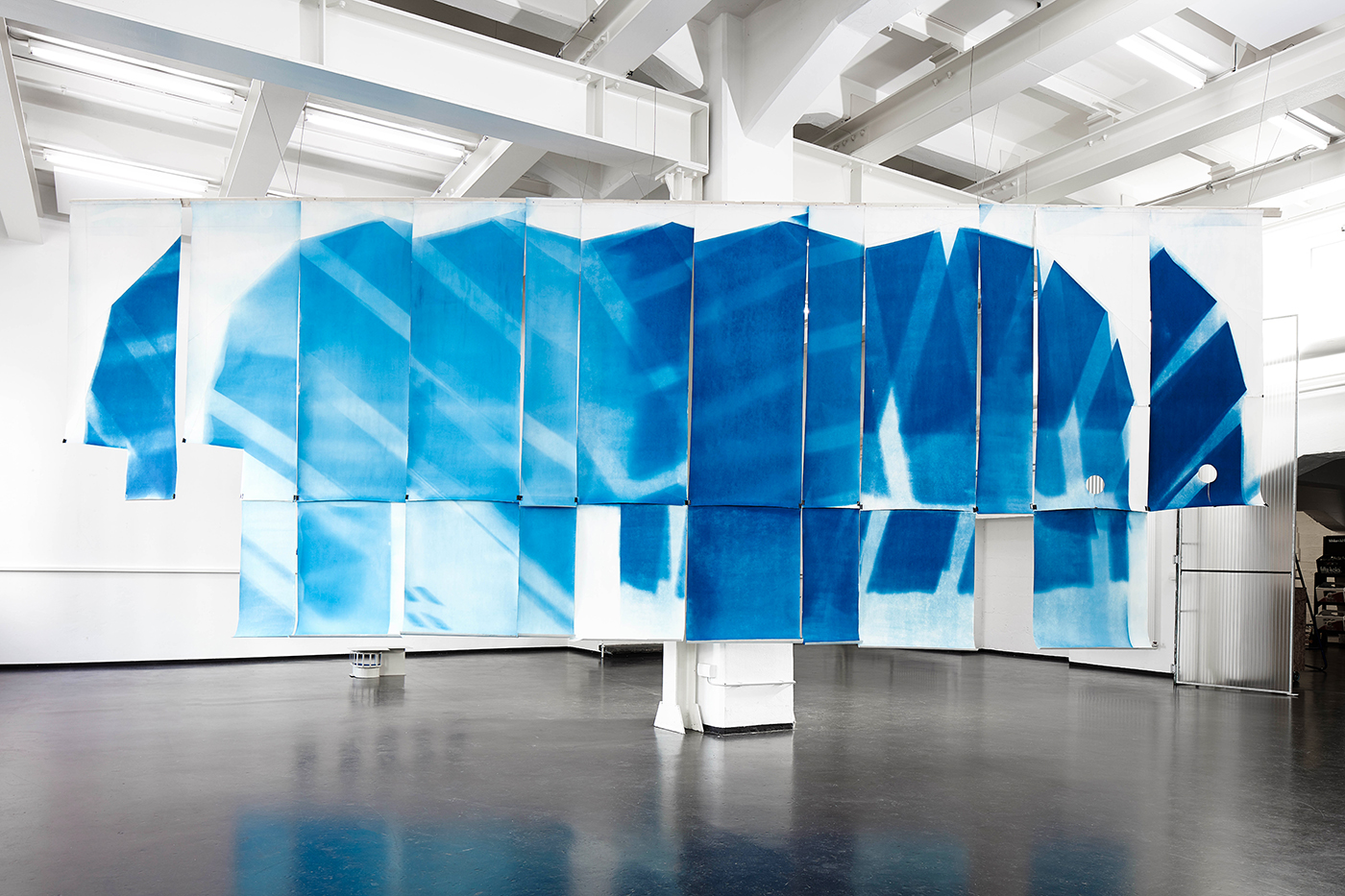

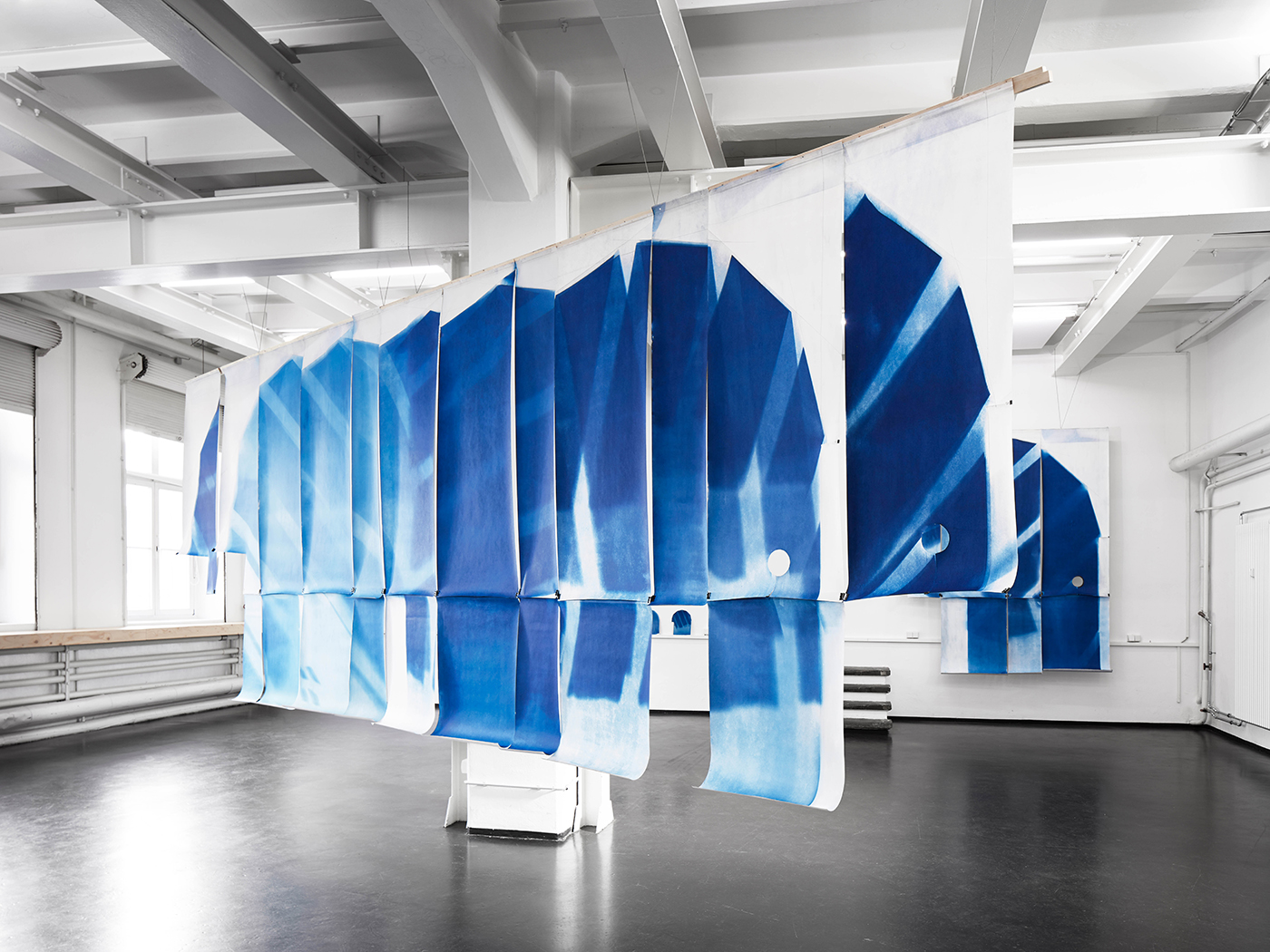


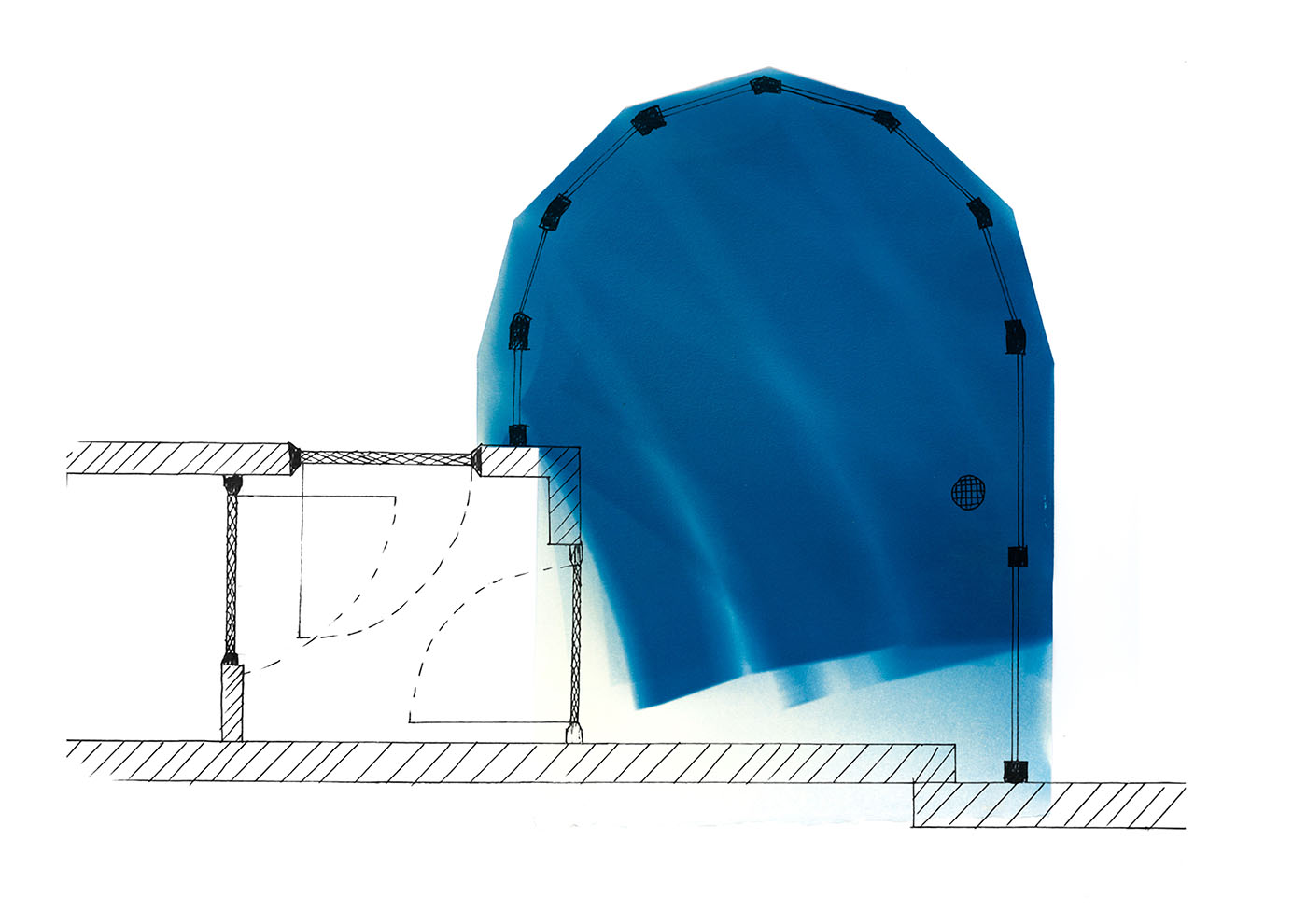

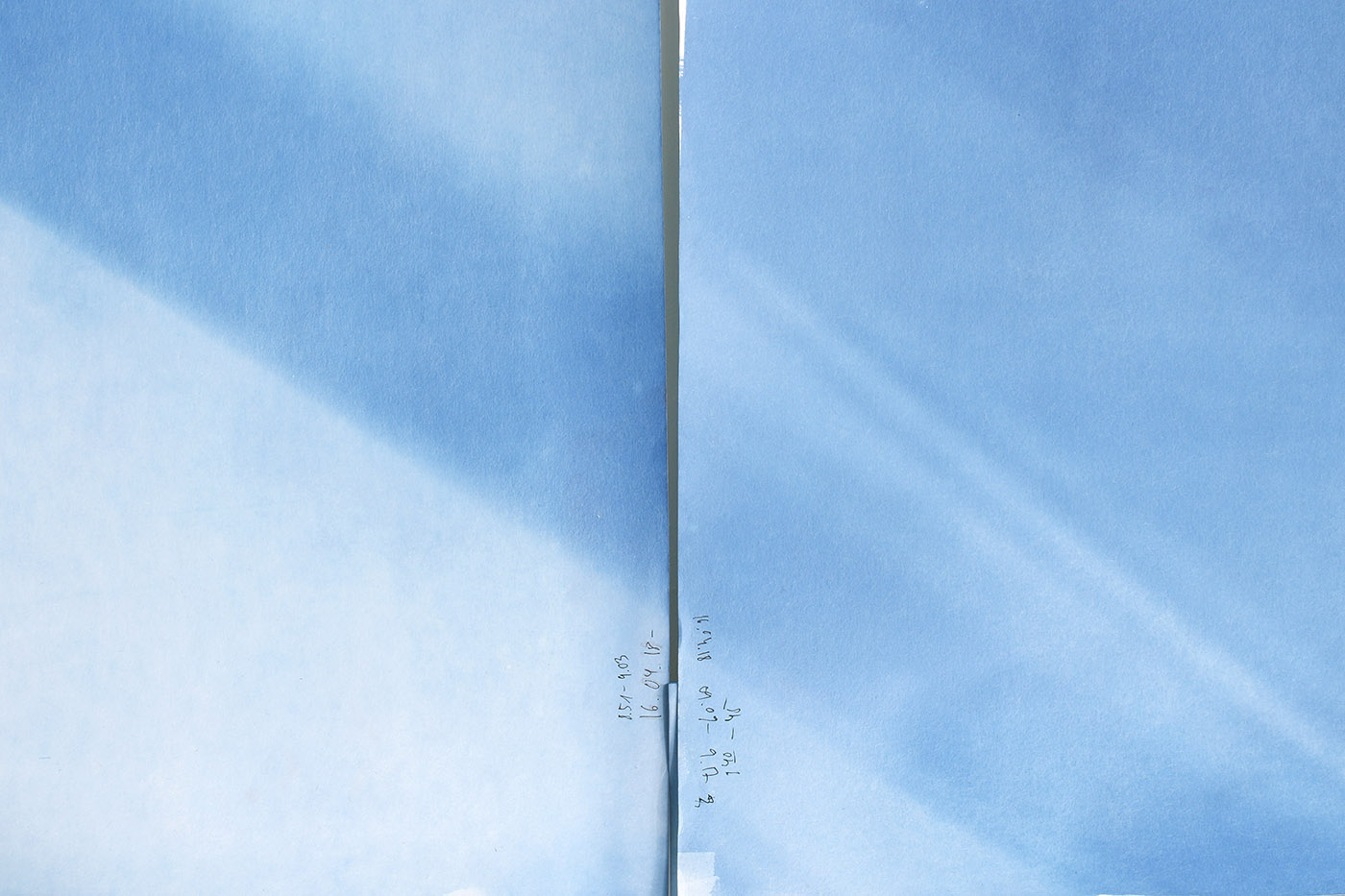
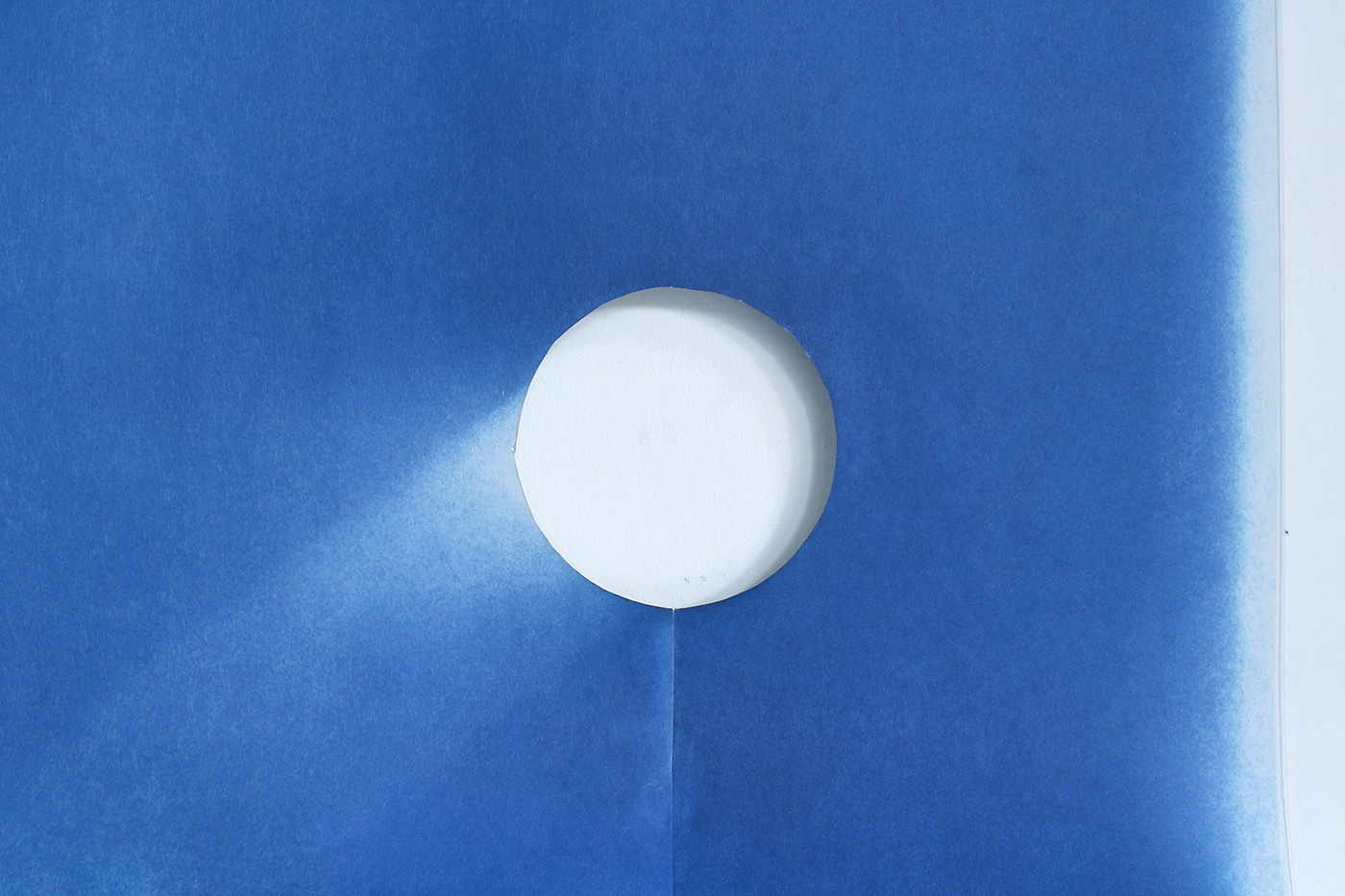


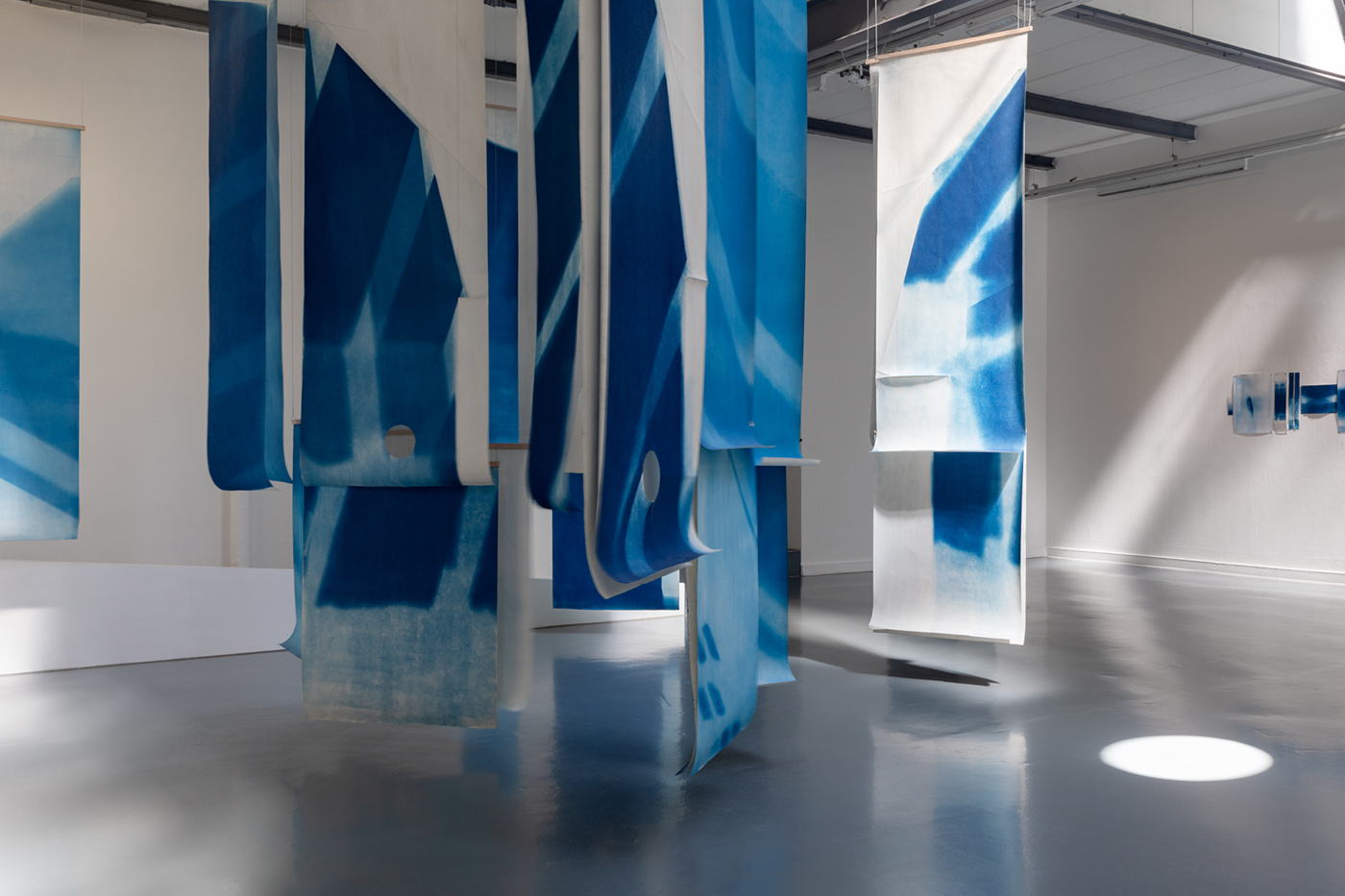


under the same sun: parksluizen
kiosk, a case study in scale 1:1 (2018)
With this work we explored the concept of thinking of
a building as a 'camera'. The work was
realised in a former kiosk building in the Parksluizen complex in Rotterdam,
designed by Bart van der Lecq. The kiosk building is now used as a project
space called Galerie Lecq. For our
exhibition, we took the opportunity to create light recordings via the
cyanotype process with the dimensions of the entire space in a scale of 1 : 1. The
kiosk is orientated towards the south, so we had sunshine all day and plenty of
time to capture how light travels through the space. We worked with multiple
and long exposures, turning the kiosk into a working camera. For each
exhibition, we rearranged the cyanotypes in a different order to think through
the temporal and spatial relations they once recorded.
With special thanks to curator and artist Marijke Appelman. Photo credits exhibition views: Nicolas Wefers and Jaqueline Fuijkschot.
With special thanks to curator and artist Marijke Appelman. Photo credits exhibition views: Nicolas Wefers and Jaqueline Fuijkschot.

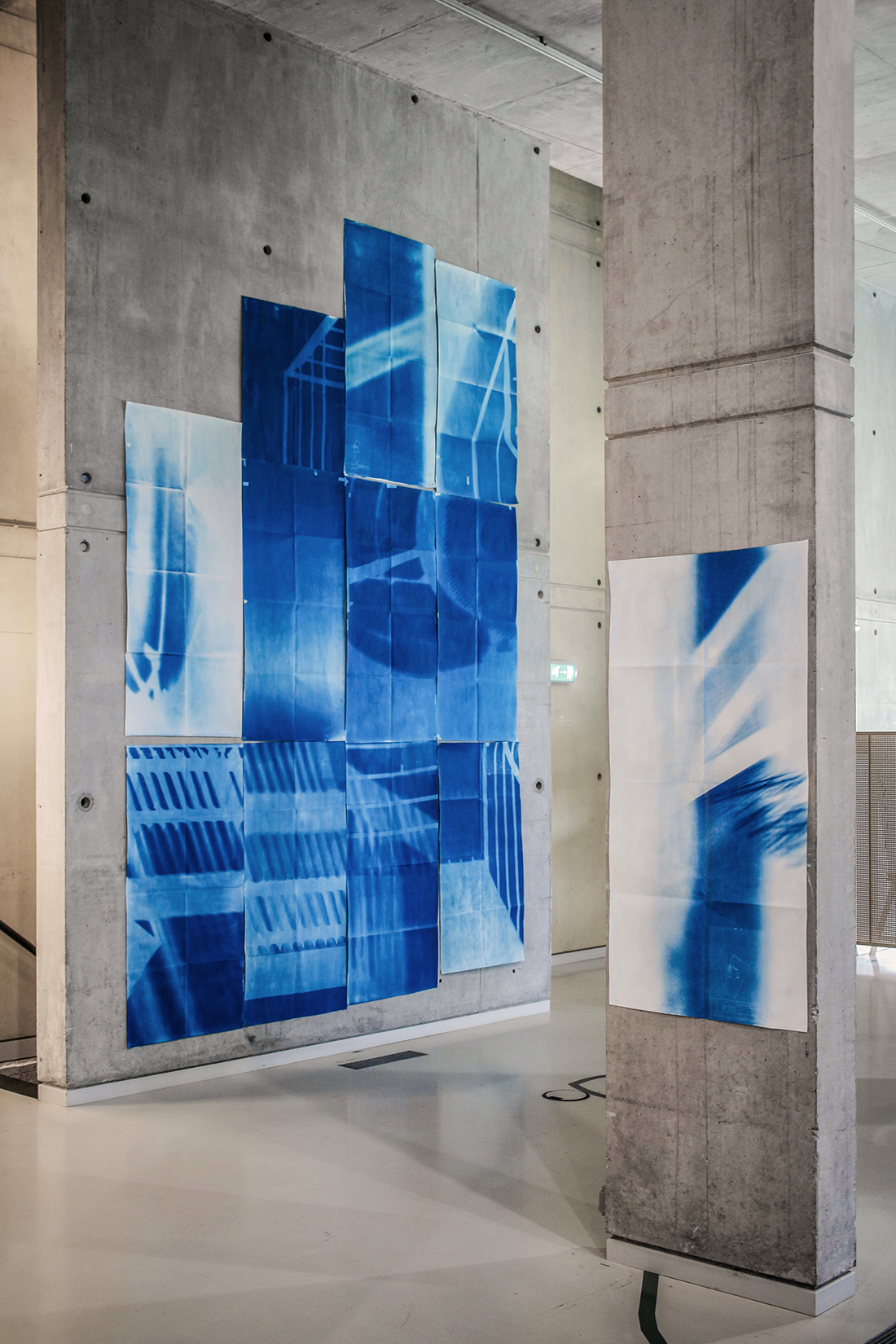



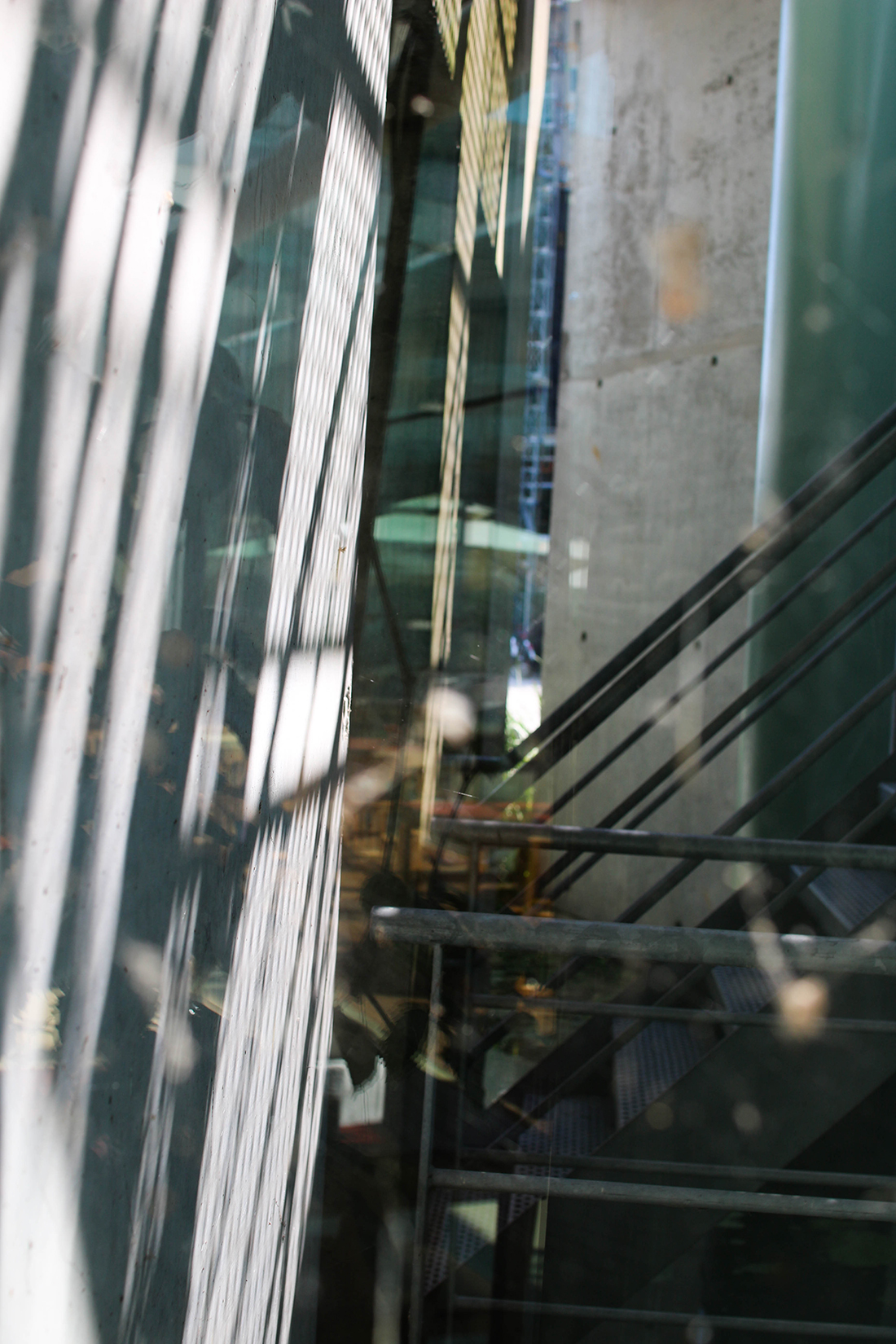
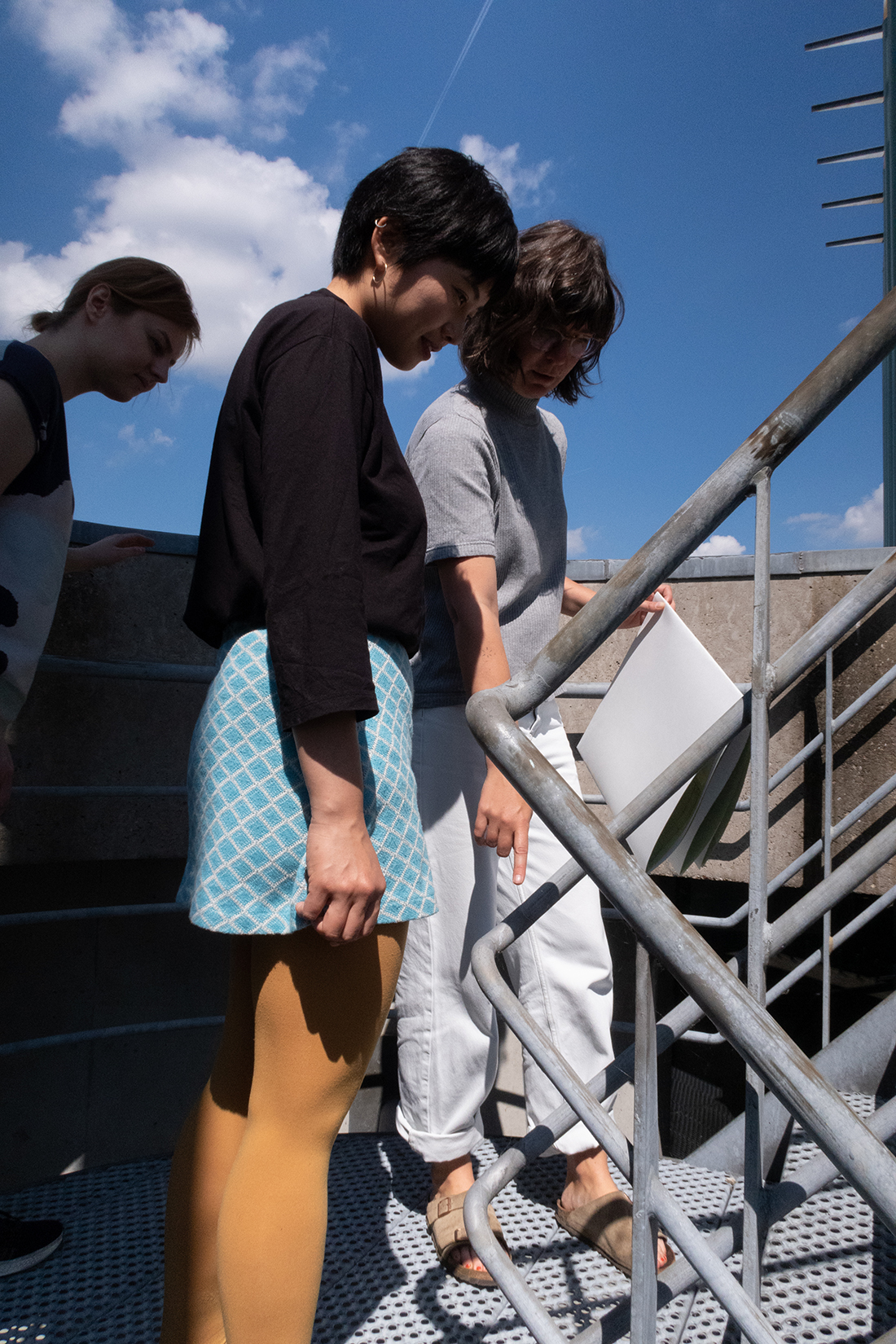

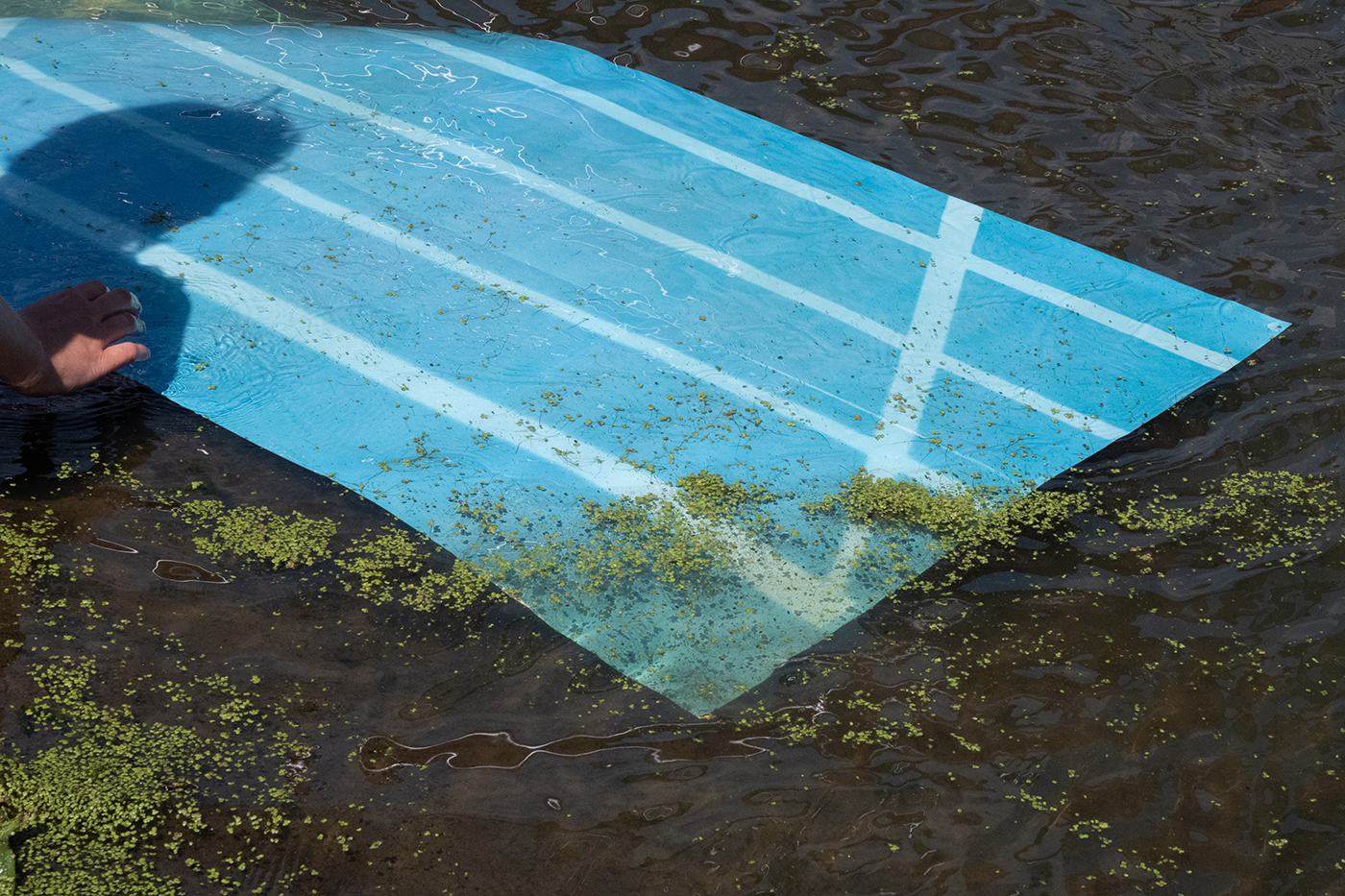



under the same sun: a collective blueprint (2019)
With this work we investigated how sunlight can be captured in space and time through a series of public workshops or 'light recording sessions'. We opened and shared our artistic practice by inviting participants to capture light in the building of Het Nieuwe Instituut. The outcome was a collective blueprint - a collection of photograms of light and shadow situations from different parts of the building. During the workshops, the building was transformed into a camera, but also into an open workspace where the blueprints were prepared, developed, fixed, dried, documented and exhibited. The collective blueprint in the exhibition space grew with each workshop over the duration of three months. At the end of the exhibition, each participant took their individual blueprint home and the collective work unraveled.
We thank all participants:
Marijke Appelman, Martijn Konings, Zhou Junsheng, Liu Chao-tze, Annick van Santen, Paul Peeters, Marie-Antoinette van der Gaag, Alexandra Shilova, Eelco Roelsma, Juul Barnard, Alexander Pachkov, Bogdan Grushin, Lea Alapini, Ariane Trümper, Jean van Wijk, Sina Hensel, Ellen Smit, Lucy Draai, Marco Apereti, David Wills, Marilotte van Lent.
Photo credit: Zhou Junsheng, Carolin Lange und Dico Kruijsse


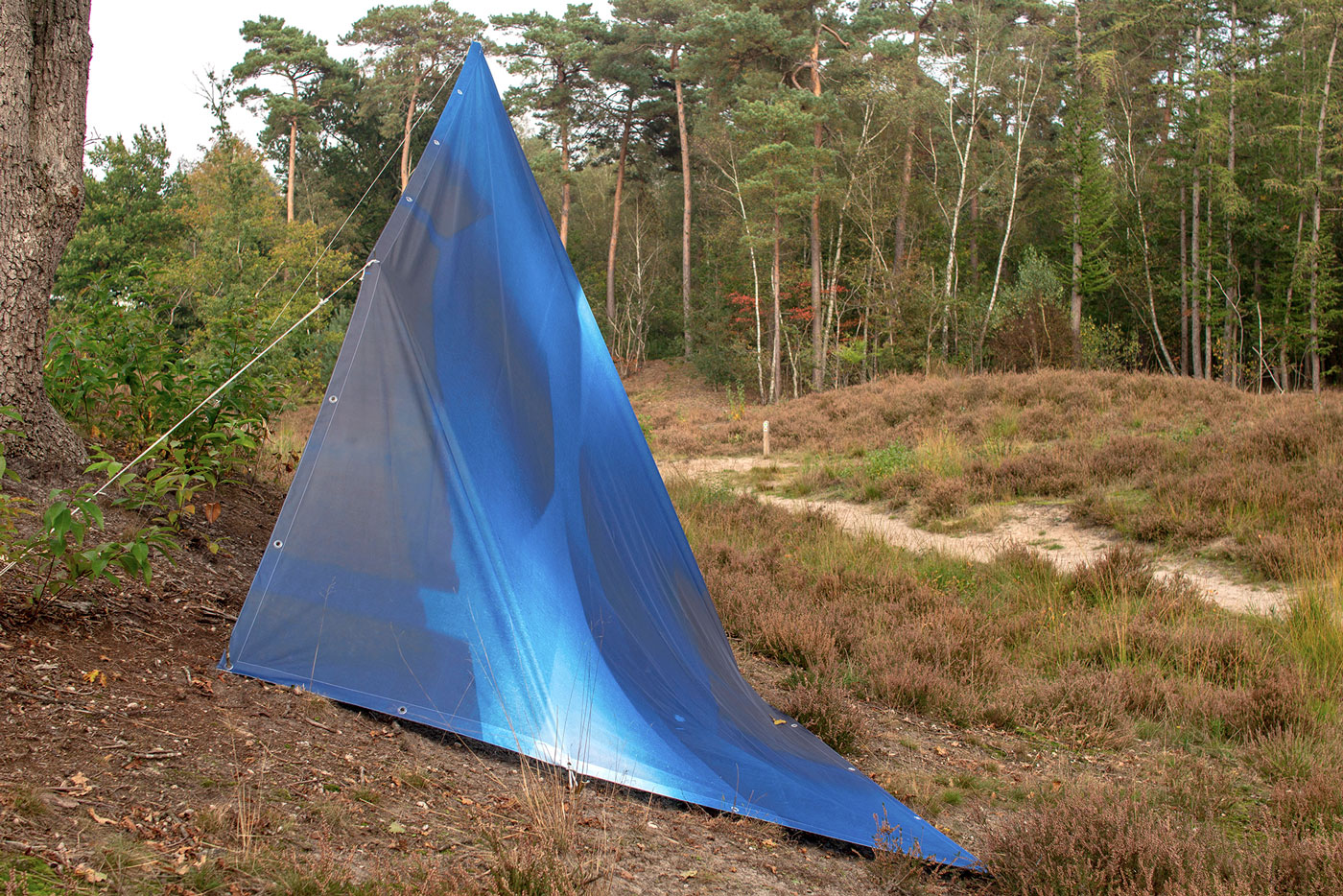







under the same sun: cutting someone else’s diamonds (2020)
For this work, we had dived into the archive looking at the original blueprints of the former sanatorium 'Zonnestraal' in Hilversum (1928; NL) We created new models based on the information in the plans and used them to create new blueprints that explore how sunlight and the building complex work together. The outcome of the collaboration with the archive resulted in a sculptural interpretation of simple outdoor shelters, using the new blueprints and the scale of one single person. A scale that is present in the overall design of the sanatorium. A scale of isolation. The presentation of the work outside of the building also refers to the specific location of the building, a place to emerge oneself in the healing environment of the Loosdrechtse Bos.
With special thanks to Hetty Berens and Ellen Smith, Het Nieuwe Instituut Rotterdam, Stichting Zonnestraal Hilversum and Jaqueline van Oostveen. This project was funded by CBK Rotterdam.